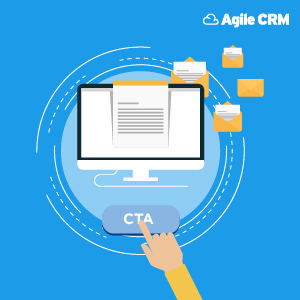The Beginner’s Guide to Marketing Analytics
In today’s business environment, companies of all shapes and sizes use a plethora of software tools to automate processes and streamline operations. Many of those tools collect metrics and analytics that can then be used to make data-driven decisions that move your business forward. Marketing automation software is an example of a tool that helps companies drive growth through providing marketing analytics and valuable insight into the results of your marketing campaigns.
But what exactly are marketing analytics and why are they so important? How do you track them and what exactly do you track and analyze? These are valid questions that many people have, so if you’re in this boat, don’t feel bad. We’ve put together a handy guide to marketing analytics to ensure that you fully understand how to leverage them to drive the kind of success and growth you need to expand your business.
What are marketing analytics?

To make data-driven decisions, you first need data upon which to make those decisions. When companies use marketing automation, the data begins to accumulate the second interaction with leads and prospects starts. It builds over time, producing a treasure trove of metrics and insight that allow marketers to make important decisions based on cold, hard numbers. This opens up the door for a host of data-driven marketing analytics techniques.
When you use a marketing automation solution to drive your marketing efforts, the system tracks and stores immense amounts of data on each lead and customer in your marketing database. This includes every interaction they have had with your company. That data can be used to better understand who each contact is, where their interests lie, and how to best nurture them through to conversion.
According to a report by Three Deep and Ascend2, the most useful metrics for measuring marketing automation performance are conversion rate and revenue generated. Those are very high-level metrics. However, your marketing automation solution should be able to track a whole host of additional metrics that help you hone in on the right recipe for success. Here are a few examples of marketing analytics you can track with a powerful MA solution:
- Email click and open rates
- Email deliverability rates
- Email bounce and unsubscribe rates
- Results of A/B testing of emails, landing pages, etc.
- New leads generated
- First touch attribution
- Website page views
- Ratio of marketing qualified leads to leads generated
- Summary metrics around lead nurturing and generation campaigns
- Comparisons of campaign results
- Landing page conversions
- Web pop-up conversions
- On which devices marketing emails are being opened and read
Armed with the insight gleaned from metrics like this, you can make highly informed decisions about which marketing tactics you employ in your campaigns. There is no one-size-fits-all approach, so you need to determine which metrics are the most important for you to track and analyze to continually improve your results.
Why are they important and how do you know what to focus on?

First of all, without data to drive your decision-making process, you are shooting in the dark. It’s like trying to find a needle in a haystack. You simply can’t hone in on what is working and what is not without the numbers to tell you.
At the same time, it’s important to know which metrics to focus on. Some metrics illuminate buying behavior and engagement patterns, while others are simply interesting statistics. The data sets most important to your business will vary depending on the nature of your particular market and business model.
At times, there are so many metrics being tracked that it can be hard to determine which ones are the most important and which ones are simply interesting anecdotes. When there is an overload of metrics and an inability to determine which to focus on, you can arrive at what Michael Rutledge, product manager at American Express, calls “analysis paralysis.”
Here’s what he had to say about the situation:
“The challenge becomes, with all this data, how can we use it all effectively? I’ve seen companies that run in circles over and over again because they can’t get clarity and agreement on what metrics matter. It can become a sickness when there are too many metrics flying around, and some are going up, others going down, and actions are paralyzed because there’s too much discussion about whether some test has illustrated an improvement or not. This is sometimes called analysis paralysis.”
Therefore, it’s important that you consult with top-level decision makers to gain consensus on which numbers they want to see over time. Then, keep a marketing scorecard that tracks those metrics and is made available to top decision makers.
Also, it’s important that a marketing team continues to track metrics that illustrate which tactics are working so they can engage in continual self-improvement. Marketing automation provides the metrics and analysis; it’s up to you to determine which data to analyze in the decision-making process.
How do you track them?

You don’t! Your MA solution provides all of the marketing analytics tools needed to track virtually any metric you want to see. These digital marketing analytics should be considered a roadmap to your success. The best part is that all the tracking is done by the system itself, without you having to lift a finger.
Most reliable MA systems also allow you to engage in A/B testing to uncover which tactics are working well for you and which are falling short. A/B testing consists of trying out two different approaches to the same marketing tactic (i.e., an email or a landing page) to determine which works best for your audience. Read on to learn more about the benefits of A/B testing, as this is one of the more efficient marketing analytics techniques available to you.
The important takeaway is that you have a system in place that can track what you want to analyze. According to Forrester Research, 91% of marketers say a tool that enables their teams to review, analyze, and act upon customer and marketing data in a continuous and real-time fashion would be valuable for their organization. If you’re not currently using marketing analytics software to track results, now is the time to join that 91%.
What should I track and why?

That depends in large part on what you need to know about your business. Are you concerned about your email deliverability rates? Are you interested to know how many people are engaging with your new content? Do you wonder how many people are mentioning you on social media? These types of questions should drive your approach to tracking marketing analytics.
Also, what you track depends on your objective. If you want metrics that will inform your marketing efforts, you’ll track certain things. While if you measure metrics for your CEO’s eyes, those would be different metrics.
While you sit back and ponder which metrics will be most important to your success, here are a few examples of the metrics most tracked by marketers today:
Email open rates

Measuring email open rates is fairly basic and is a metric used by nearly every marketer who engages in email marketing. It is one of the essential metrics to gauge how effective your messaging is in engaging your audience.
According to the latest findings from GetResponse’s Email Marketing Benchmarks report, the average marketing email open rate across every region of the world is around 25%. If your open rates are hovering at a lower level, this is an indication that you need to spice up your subject lines. It doesn’t matter how awesome your email body is, if the subject line does not inspire and no one opens it, they will never know.
Email click-through rates

Just like open rates indicate the strength of your email subject line, click-through rates indicate the strength of your email body content. Once someone opens your email, the content inside must be engaging.
Not only do you need awesome, engaging content, you also need a clear and powerful call to action (CTA) that motivates your lead or customer to take the next step. Optimizing your CTA is just one of many email marketing best practices you should be utilizing.
According to the same report by GetResponse, the average global click-through rate is around 4%, meaning that 4% of those that were sent your email clicked a link inside. If your click-through rate is below average, it’s a sign that you need to revisit the information you present in your emails and how you do so.
MQL to SQL conversion rate

When you nurture a lead through to being marketing qualified, they get passed over to sales for further follow up. Next, sales reaches out and tries to start a conversation with that lead. At that point, they are considered sales accepted leads (SALs). If the conversation goes well, your sales rep will open an opportunity or deal with that lead, which means they have been marked as a sales qualified lead (SQL).
Measuring the percentage of MQLs that turn into SQLs gives you an idea of the quality of leads you are passing to sales. If sales is only qualifying one out of every 20 MQLs you pass them, that indicates that you are probably qualifying them too soon.
Customer acquisition cost

This is a metric that your CEO will want to see. Your marketing automation solution should be able to attribute marketing influence to any lead that you run through a campaign, or that has had any touchpoint with marketing.
To calculate customer acquisition cost, take the total amount of money you spend on marketing in a given time period, and divide that by the number of new customers acquired in that time that had marketing attribution. This will give you a sense of how much it costs marketing to turn a lead into a customer. Learn more about metrics your C-level team will want to see.
Marketing return on investment (MROI)

Measuring MROI is tricky, but it is another important metric that your executives will want to see. It will tell you how much money marketing is bringing into your business. You calculate MROI by doing the following:
- Take the incremental financial value gained as a result of marketing investment.
- Subtract from that the total cost of your marketing investment
- Divide that by the total cost of your marketing investment
Sounds simple, right? In fact, there are a lot of nuances involved in measuring MROI. Harvard Business Review provides a thorough refresher on measuring MROI if you need to better understand how this metric works.
MROI is highly important because it can prove that your marketing efforts are increasingly bringing in more money to your business. This gives you the leverage to request a larger budget so you can keep increasing your MROI.
Social marketing metrics

So many of your consumers use social media on a daily basis that measuring social marketing metrics is key these days. You can run marketing analytics from Facebook, Twitter, LinkedIn, Google Plus, or virtually any other social platform you want. All you need is a good tool for social listening and monitoring to measure your social return on investment.
Metrics like brand mentions, followers, content or post shares, and levels of engagement can provide great insight into the results of your social media marketing. As social media marketing continues to rise, these metrics will be increasingly important to measure.
Key takeaways

The metrics listed in the section above barely scratch the surface. To fully dig into the extent of every last metric that can be measured and why it is important, would be the scope of a long-form white paper.
The important thing for you to remember is that the metrics that you measure will vary depending on your business, your customers’ needs and behaviors, and for whom you measure them. CEOs want to see how much money marketing is bringing the company. Marketers want to see which tactics are moving the needle so they can focus more on those to increase their MROI.
The first step to maintaining an ability to measure and analyze marketing metrics is to have a marketing automation system in place. An MA system does all the tracking and most of the analysis, taking a huge burden off your shoulders. There are many strategic models for measuring analytics and metrics, and yours will be as unique as your business. Whether you measure marketing analytics for a small business or an enterprise, MA software needs to be at the heart of your metrics and analysis operation.
Marketers often don’t get enough credit for the hard work they do. However, once you start to track metrics and can show improvements over time, you’ll start to get noticed. And if you can hone in on the metrics that delight your executives, you might see a promotion or a raise. Instead of shooting in the dark, shine your light on the metrics and analytics that help you make the data-driven decisions to grow your business.
3 Comments
Rachael Chapman
about 6 years agoA very interesting Blog. Thank you so much!!! I am a writer too. And I have written blogs on technology as well. I would like to share a similar blog with you as well. http://limeproxies.com/blog/a-beginners-guide-to-marketing-automation/ hope it helps! Have a great Day!
ReplyMartin Brendan
about 6 years agoAwesome guideline. It's a very helpful for me. I am reading your blog and i get the right information here about marketing analytics. Thank you so much sharing useful post.
ReplyGabriel Swain
about 6 years agoThat's awesome! Our goal is to provide insight into trends and best practices that help you work smarter and more effectively. I'm so glad you found this post helpful. Keep reading--we post multiple articles each week. And please continue to comment; we love the dialogue created through the comments section so thanks for sharing!
Reply